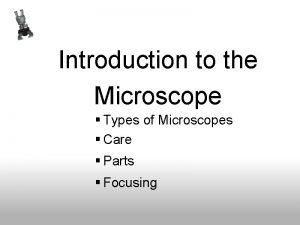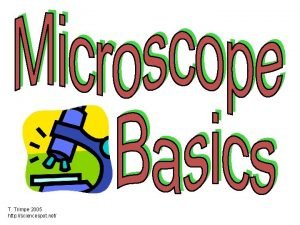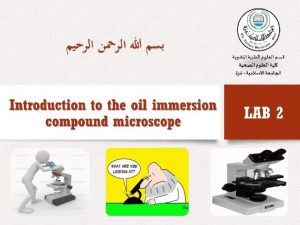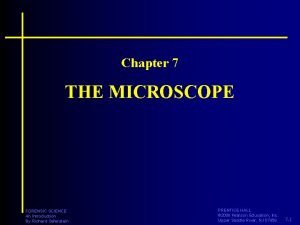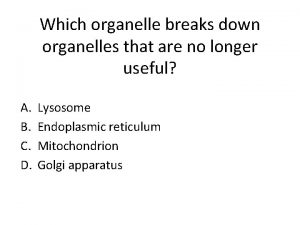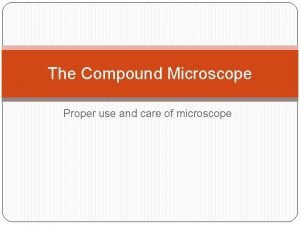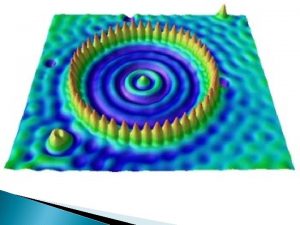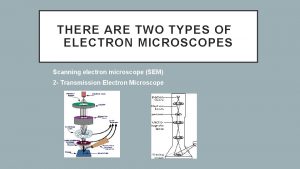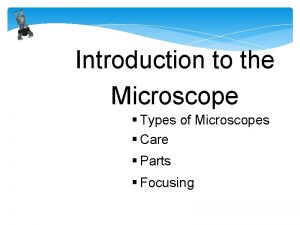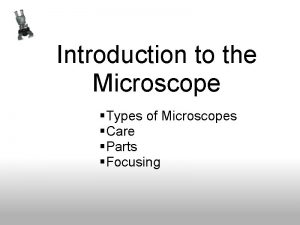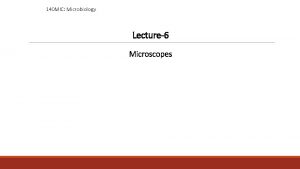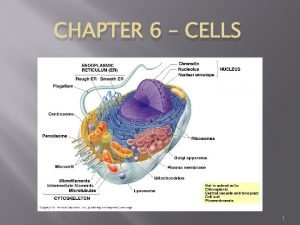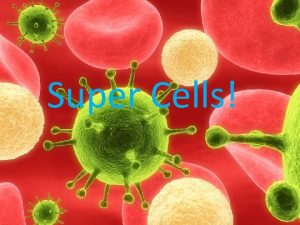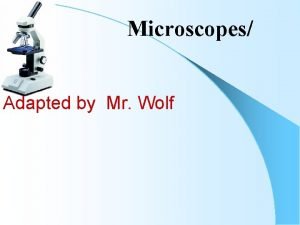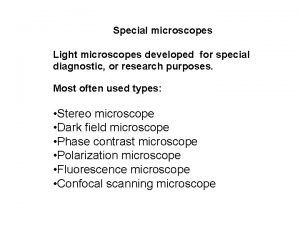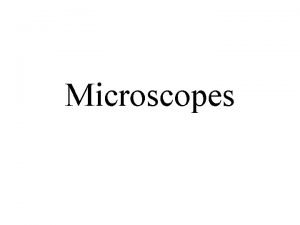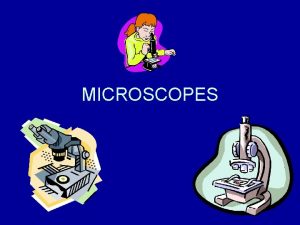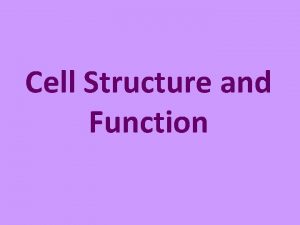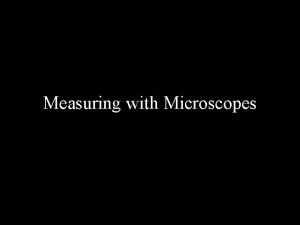Cells Unit 3 The Discovery of Cells Microscopes













- Slides: 13

Cells Unit 3

The Discovery of Cells • Microscopes have become an important tool for studying biology • In 1665, Robert Hooke used a simple microscope (30 magnification) to look at a thin slice of cork, in which he saw many “little boxes” • He called them cells because they reminded him of the small rooms in which monks lived

The Discovery of Cells • Ten years later, Anton van Leeuwenhoek used a more powerful microscope (300 magnification) and discovered “tiny animals” that lived in pond water

Cell Theory • In the 1800’s, the cell theory was developed because of the works of Schleiden, Schwann, and Virchow • The cell theory states that: – All living things are made up of one or more cells – Cells are the basic units of structure and function in organisms – All cells arise from existing cells

Cell Size & Shape • Cells vary greatly in size and shape • These variations enable them to perform specific functions in the body • It is important for a cell to have the biggest surface-area-to-volume ratio possible so that nutrients traveling through the cell membrane can reach their destination easily • If a cell is large, its shape will often be one that increases surface-area-to-volume ratio

Cell Size & Shape • Which cell has a bigger surface-area-tovolume-ratio, and therefore, will be more successful?

Cell Features • ALL CELLS HAVE: – Cell Membrane: Outer boundary of cell – Cytoplasm: Fluid in which all contents of cell are suspended – Ribosomes: Where proteins are made – DNA: genetic material

Two types of Cells: The Basics • PROKARYOTIC – Occur individually – No nucleus or other membrane bound organelles – Genetic Material is single loop of DNA – Cell wall surrounds cell membrane for structure – Capsule helps cell cling to surfaces – Ex: Bacteria!! • EUKARYOTIC – “You” have “Eu”karyotic cells – Occur single celled or multicellular – Membrane bound nucleus & other organelles – Includes all cells (plant, animal, fungi, algae) except bacteria – Ex: Skin Cells

Inside the Eukaryotic Cell • Cytoskeleton helps the cell move, keep its shape, and organize its parts – made of protein fibers

Inside the Eukaryotic Cell • There are many organelles in eukaryotic cells, which are membrane bound structures that carry out specific activities • Nucleus: Stores DNA • Endoplasmic Reticulum (ER): System of internal membranes that move protein and other substances throughout cell – Rough ER have ribosomes attached and smooth ER do not

Inside the Eukaryotic Cell • Golgi Apparatus: Modifies, sorts and packages cell products • Lysosomes: Where enzymes digest old, damaged or unused organelles • Mitochondria: Uses energy from macromolecules to make ATP (power house of cell)

Inside the Eukaryotic Cell • PLANT CELLS HAVE ALL OF THE ABOVE PLUS: • Chloroplasts: Use light energy to make food for plants • Central Vacuoles: Store water and waste. When vacuole is full, plants are sturdy • Cell wall: Made of cellulose and provides support

Levels of Cellular Organization • Cell: Smallest unit of life (ex: lung cell) • Tissue: Distinct group of cells that have similar structures and functions (ex: lung tissue) • Organs: Specialized structure that has a specific function (ex: lung) • Organ Systems: Various organs that carry out a major body function (ex: respiratory system)
 When focusing a specimen, you should always start with the
When focusing a specimen, you should always start with the T. trimpe 2006 http //sciencespot.net/
T. trimpe 2006 http //sciencespot.net/ The purpose of a microscope
The purpose of a microscope Forensic science microscopes
Forensic science microscopes Which organelle breaks down
Which organelle breaks down Uses of compound microscope
Uses of compound microscope Electron microscopes main idea
Electron microscopes main idea Types of electron microscopes
Types of electron microscopes Types of microscopes
Types of microscopes Different types of microscope and their uses
Different types of microscope and their uses Unit 10, unit 10 review tests, unit 10 general test
Unit 10, unit 10 review tests, unit 10 general test Paranasal sinus development
Paranasal sinus development Regulation of tubular reabsorption
Regulation of tubular reabsorption Parafollicular
Parafollicular
